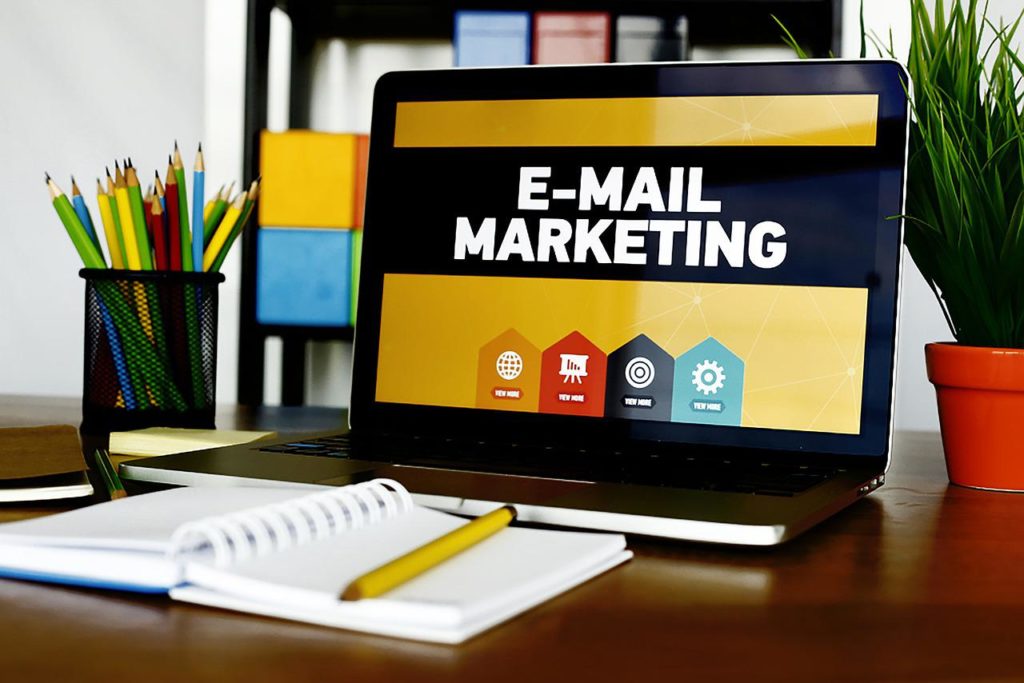Inbound email marketing is still a vital part of any marketing strategy. With so many emails to choose from, how can you ensure that your messages are opened, read, and acted upon? This post will discuss the importance of inbound email marketing and the best practices on how to get the best conversion rate from those messages you sent out.
What is inbound email marketing?
Inbound email marketing is a type of marketing that uses email to drive customers to a company’s website. This type of email marketing can include sending potential customers promotional content, such as a newsletter or coupon, or infographics in order to persuade them to visit the company’s website.

What does inbound email marketing offer?
Email marketing is still one of the most effective means of reaching your target market. In fact, according to a study by the Direct Marketing Association, email marketing is still the most effective means of acquiring new customers, with a return on investment of $38 for every dollar spent.
The 5 benefits of inbound email marketing are
- Increased website traffic
- Increased brand awareness
- Increased lead generation
- Increased customer loyalty
- Increased revenue
Increased website traffic
Inbound email marketing helps to increase website traffic by driving potential customers back to your website. The emails you send out will contain links to your website, which will help to increase traffic.
Increased brand awareness
Another importance of inbound email marketing is that it also helps to increase brand awareness. By sending out regular emails containing information about your company, products, and services, you will help to raise awareness about your brand.
Increased lead generation
Inbound email marketing also helps to increase lead generation. By providing potential customers with information about your products and services, you will help to generate leads.
Increased customer loyalty
Inbound email marketing also helps to increase customer loyalty. By providing customers with valuable information, you will help to keep them loyal to your company.
Increased revenue
Inbound email marketing also helps to increase revenue. By driving website traffic and generating leads, you will help to increase sales and revenue.
How does inbound email marketing work?
Inbound email marketing works by collecting email addresses from potential customers who have expressed an interest in a company’s products or services. The company then sends out regular email newsletters or other marketing materials to these customers, providing information about new products or services, special offers, or other relevant information. Those interested in the product can then purchase the advertised product.

This form of email marketing is a great way to keep in touch with customers and keep them up-to-date on the latest company news. It can also be a very effective way to increase sales by promoting new products or services.
Inbound email marketing starts with creating a list of email addresses. This can be done by acquiring email addresses from customers who have purchased products from you in the past, or by collecting email addresses from people who have signed up for your mailing list or newsletter.
Once you have a list of email addresses, you can create a series of automated emails that will be sent out on a regular basis. The emails can be used to promote new products or services or to keep customers up-to-date on the latest company news.
What are the potential risks of inbound email marketing?
There are a few potential risks associated with inbound email marketing. One is that email addresses may be obtained illegally, which could lead to spamming or other unwanted contacts from the sender. Additionally, email recipients may not appreciate being contacted by a company they have not explicitly consented to hear from, which could lead to negative sentiment or unsubscribing from future communications.
Finally, there is always the possibility of a data breach, in which confidential information is exposed or stolen. Even though inbound email marketing is a great way to reach out to potential customers and build relationships with them, it is important to be aware of the risks involved and take steps to mitigate them.
The benefits of inbound email marketing
According to a study by The Radicati Group, there were over 205 billion emails sent and received per day in 2017. This number is expected to grow to over 246 billion emails per day by 2021. This means that if your business is not using email as part of its marketing strategy, it is missing out on a huge opportunity to reach its target market.
Is inbound marketing dead?
There are many reasons why inbound email marketing is still a vital part of any marketing strategy. The first reason is that email is still one of the most common methods of communication. In fact, according to a study by The Radicati Group, there will be over 3.7 billion email users by 2019. That’s a lot of potential customers!
Another reason is that email is one of the most effective methods of marketing. A study by the Direct Marketing Association found that email is nearly twice as effective as social media when it comes to acquiring new customers.
The downfalls of inbound email marketing
There are disadvantages to using inbound email marketing; one of such is that it can be difficult to stand out in a crowded inbox and that people may not see your email if their inbox is cluttered.
Additionally, many people now use filters to automatically delete or move certain types of emails to specific folders, which can mean that your message may not be seen by your target audience
What are the best practices for inbound email marketing?
In order to get your messages opened, you need to ensure that they are relevant to your target audience. You also need to make sure that your subject lines are catchy and persuasive.
Tips for creating effective subject lines
- Include the recipient’s name in the subject line
- Include a benefit in the subject line
- Include a time-sensitive element in the subject line
- Keep the subject line short and to the point
- Use personalization tokens in the subject line
Best and effective inbound email marketing strategies
- The first step is to make sure that your emails are relevant to your target market. If your emails are not relevant, your target market will not open them, read them, or act upon them.
- The second step is to make sure that your emails are well-written and well-designed. If your emails are not well written or well designed, your target market will not open them, read them, or act upon them.
- The third step is to send regular email newsletters: the best way to engage and keep in touch with your audience is by sending them regular email newsletters. This way, you can keep them up to date on your latest products, services, and blog posts.
- Offering free resources: another great way to attract people through your email list is by offering free resources. This could be anything from eBooks and whitepapers to templates and checklists.
- Running contests and giveaways: other possible ways to attract people to your email list are by running contests and giveaways. This could be anything like a free product.
- Using social media to promote your email list: One of the best ways to promote your email list is by using social media. You can do this by sharing short, catchy messages that promote your email list, as well as featuring images that promote your email list.
- You can also market your email list by distributing flyers and brochures that promote your email list. Additionally, you can place advertisements for your email list on your website.
How do you measure the success of inbound email marketing?
There is no one-size-fits-all answer to this question, as the success of inbound email marketing will vary depending on your goals and the specific strategies you employ. However, some common measures of success include the number of subscribers you gain, the percentage of people who open your emails, the number of people who click through to your website, and the amount of revenue you generate as a result of your email marketing campaigns.
To measure the success of your inbound email marketing campaigns, you should track the following metrics:
- The number of subscribers: This is the number of people who have subscribed to your email list.
- Percentage of people who open your emails: This is the percentage of people who open your emails, regardless of whether they click through to your website or not.
- The number of people who click through to your website: This is the number of people who click through to your website from your email messages.
- Amount of revenue you generate as a result of your email marketing campaigns: This is the amount of revenue you generate as a result of your email marketing campaigns.
- Percentage of customers who return to your site as a result of your email marketing campaigns: This is the percentage of customers who returned to your site as a result of your email marketing campaigns. It is different from the number of people who click through to your website (who may come back again or may never come back again). Those who click through and still returned to the website on their own are the numbers we are interested in. This forms the loyal customers and they are the most engaged and likely the customers that may keep buying your products. Because customer engagement with your form of advertising helps to increase conversions.
Differences between inbound and outbound marketing strategies
These are two different types of marketing. Both have their advantages and disadvantages, but they are all forms of marketing used to promote products or companies.
Inbound marketing is a term used in marketing and refers to marketing efforts that draw customers in, as opposed to outbound marketing, which refers to marketing efforts that push customers away. Inbound marketing focuses on creating quality content that attracts attention and provides value to customers, whereas outbound marketing relies on interrupting customers with ads and other promotional messages.
Inbound marketing is a strategy that focuses on drawing customers to businesses through various forms of content, such as blog posts, social media posts, and videos. Outbound marketing, on the other hand, is a strategy that focuses on reaching out to customers through methods such as telemarketing and direct mail.
Last Updated on November 2, 2023 by Nansel Nanzip BongdapNansel is a serial entrepreneur and financial expert with 7+ years as a business analyst. He has a liking for marketing which he regards as an important part of business success.
He lives in Plateau State, Nigeria with his wife, Joyce, and daughter, Anael.
